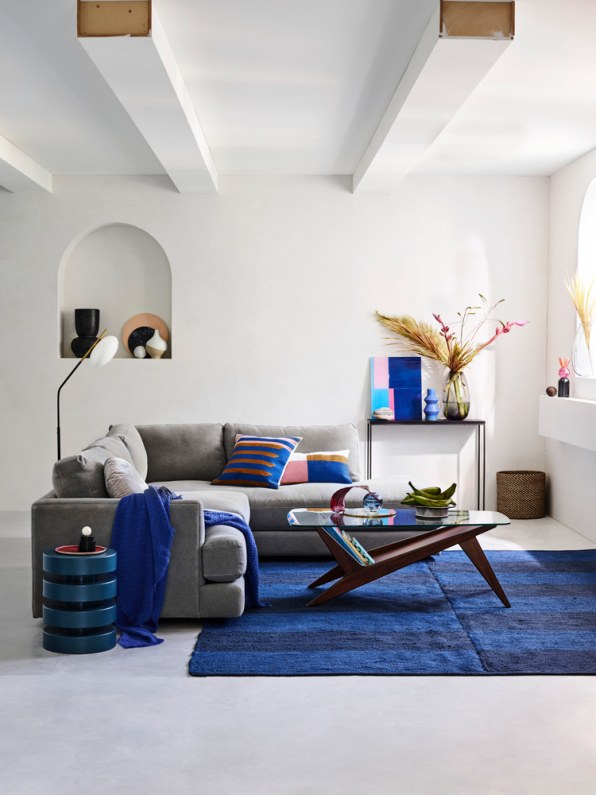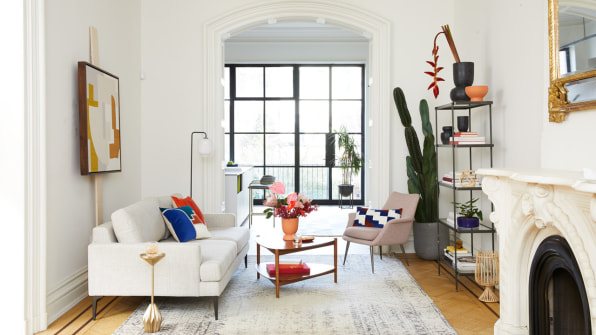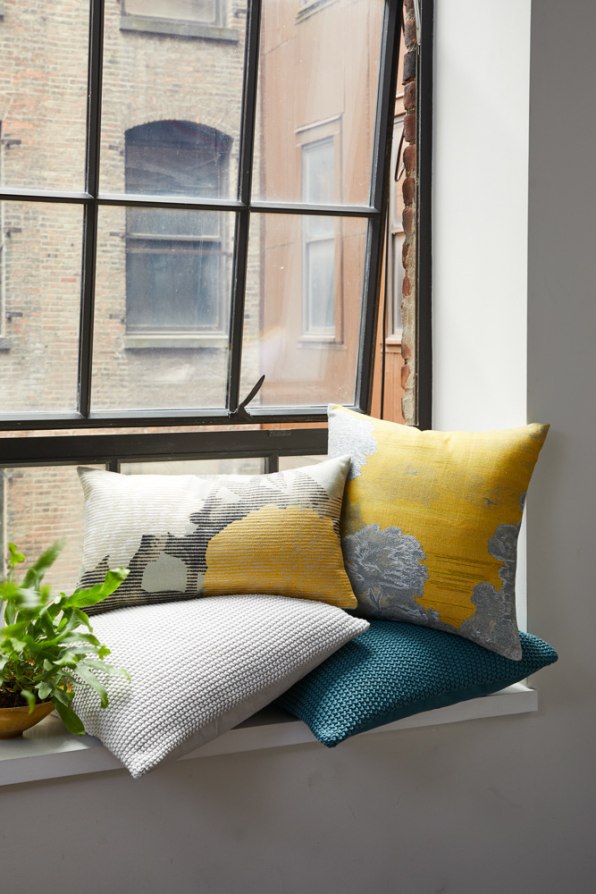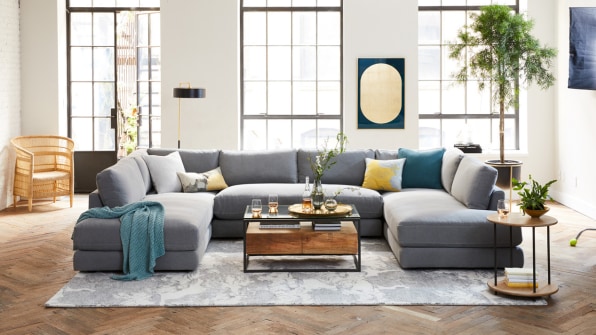Highland Console at West Elm Console Tables Home Decor Tables
When I first got Instagram nearly a decade ago, my feed was like a virtual Vogue center spread, full of gorgeous images of leather jackets and the new "It" bag. But as I've gotten older and invested more time and money in my home, it has begun to look a lot more like Architectural Digest or Elle Decor. These days, I drool over gorgeous armchairs draped with cashmere throw blankets and lambskin pillows.

Rent the Runway has noticed that many of its customers have a similar mind-set. Since 2009, the company has made it possible to rent, rather than buy, fashionable clothes. But starting today, in a major new development, Rent the Runway is now allowing customers to rent home goods, too. In a partnership with the furniture company West Elm, Rent the Runway will now let you rent 26 different "home bundles" of trendy decorative pillows, throws, shams, and blankets so that your home can be just as on trend as your closet.
Yes, you heard that right. Rent the Runway and West Elm are betting that you'll be down with bringing throw pillows into your home that another customer (and her dog) snuggled on. Rent the Runway subscribers will be able to rent these bundles as one of their rotating spots in their RTR Unlimited (which costs $159 a month) or RTR Update (which costs $89 a month) membership programs. Customers can hold on to these home bundles for as long as they would like, from weeks to months. If they want to buy the pieces, they can purchase them at a discounted price.
Jennifer Hyman, cofounder and CEO of Rent the Runway, believes renting home products will be particularly valuable for millennial and gen-Z consumers who move frequently and don't want to buy home decor that they may have to get rid of when they leave their apartment. "Their lives are very dynamic, and they're constantly moving as they enter new life stages," Hyman says. "The home category seems very well-suited for the circular economy."

The circular economy is a popular idea in business these days. Until recently, the norm for consumers was to buy products, use them, then throw them away. A more sustainable model is one in which customers use a product, then either return it or resell it so that it circulates in the economy for longer. A perfectly circular system would be one in which the product is recycled, rather than thrown in a landfill, at the end of its life, so that it gets turned into new products. Renting apparel allows each item of clothing to be worn more times. This makes it arguably more sustainable than buying clothing, although we still need to factor in the environmental cost of dry cleaning and shipping clothes back and forth.

Now, we're seeing the rental model move into the home goods space, with startups like Fernish and larger corporations like Ikea making it possible to rent, rather than buy, furniture. West Elm already makes some pieces of furniture available through Feather, and Alex Bellos, West Elm's president, says the company is actively exploring more avenues for rental. "We know our customers are already participating in the circular and sharing economy," he says. "We also know that our customers are taking their home style into a public space by sharing pictures of their homes on social media. We want to be part of all of that."
Rent the Runway helped to normalize the idea of renting everyday objects that were once only available for purchase. And it also created a lucrative business model. Unlike other retailers, Rent the Runway can purchase a garment once but continue to make a profit on it as it is rented repeatedly. Last year, the company was valued at almost $800 million, and it has been profitable for several years now. "Our goal has always been to create a new model for dynamic ownership," says Hyman. "It creates a new relationship between a customer and a thing that they don't need to own forever, whether that thing is a piece of clothing or home decor."
But Rent the Runway is also an expert at the logistics of rental–at taking an item that one customer has used and making it look new for the next customer. It makes sense for Rent the Runway to begin with home textiles, since it has the largest dry cleaning operations in the world, and has a lot of experience making used fabric look new.

That said, it might still be a psychological leap for some customers to rent home textiles, particularly bedding, which feels like a whole different level of intimacy compared with a pair of jeans. Hyman believes that customers will get over this hurdle, given that Rent the Runway customers have been eager to rent items of clothing that seem equally intimate, like workout clothes. "The products in both of these categories–whether you're putting clothing on your body or sleeping with your duvet cover–are intimate," says Hyman. "We're already in the business of the restoration of these very intimate and personal items. We've invested a lot in quality control and cleaning, so we feel very confident in our ability to do this as it relates to your home decor."
Hyman says that this partnership is only the beginning of a broader goal of making more products and product categories available through a rental model. Over the past three years, she has found that customers are willing to rent almost anything Rent the Runway puts before them. At first, the company stocked gowns that women tended to only wear a few times to fancy events, but these days, some of the company's most frequently rented items are things that women wear every day, like T-shirts and professional outfits.
So why not not duvets and pillowcases? "We literally find that there is nothing [our customer] won't try as long as the products are design forward and high-quality," says Hyman.
Highland Console at West Elm Console Tables Home Decor Tables
Source: https://www.fastcompany.com/90316191/would-you-rent-pillows-and-blankets-rent-the-runway-is-betting-on-it